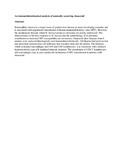| dc.contributor.author | King, R | |
| dc.contributor.author | Gough, J | |
| dc.contributor.author | Ronald, A | |
| dc.contributor.author | Nasio, J | |
| dc.contributor.author | Ndinya-Achola, JO | |
| dc.contributor.author | Plummer, F | |
| dc.contributor.author | Wilkins, JA | |
| dc.date.accessioned | 2013-05-31T07:56:40Z | |
| dc.date.available | 2013-05-31T07:56:40Z | |
| dc.date.issued | 1996-08 | |
| dc.identifier.citation | J Infect Dis. 1996 Aug;174(2):427-30. | en |
| dc.identifier.uri | http://profiles.uonbi.ac.ke/jndinya/publications/king-r-gough-j-ronald-nasio-j-ndinya-achola-jo-plummer-f-wilkins-jaan-immuno | |
| dc.identifier.uri | http://erepository.uonbi.ac.ke:8080/xmlui/handle/123456789/28116 | |
| dc.description.abstract | Haemophilus ducreyi is a major cause of genital ulcer disease in many developing countries and is associated with augmented transmission of human immunodeficiency virus (HIV). However, the mechanisms through which H. ducreyi produces ulceration are poorly understood. The characteristics of the host response to H. ducreyi and the pathobiology of its potential contribution to increased HIV susceptibility are not known. Chancroid ulcer biopsies from 8 patients were analyzed histologically and immunohistochemically. All biopsies had perivascular and interstitial mononuclear cell infiltrates that extended deep into the dermis. The infiltrate, which contained macrophages and CD4 and CD8 lymphocytes, was consistent with a delayed hypersensitivity type cell-mediated immune response. The recruitment of CD4 T lymphocytes and macrophages may in part explain the facilitation of HIV transmission in patients with chancroid. | en |
| dc.language.iso | en | en |
| dc.publisher | University of Nairobi | en |
| dc.title | An immunohistochemical analysis of naturally occurring chancroid | en |
| dc.type | Article | en |
| local.publisher | Faculty of medicine | en |

